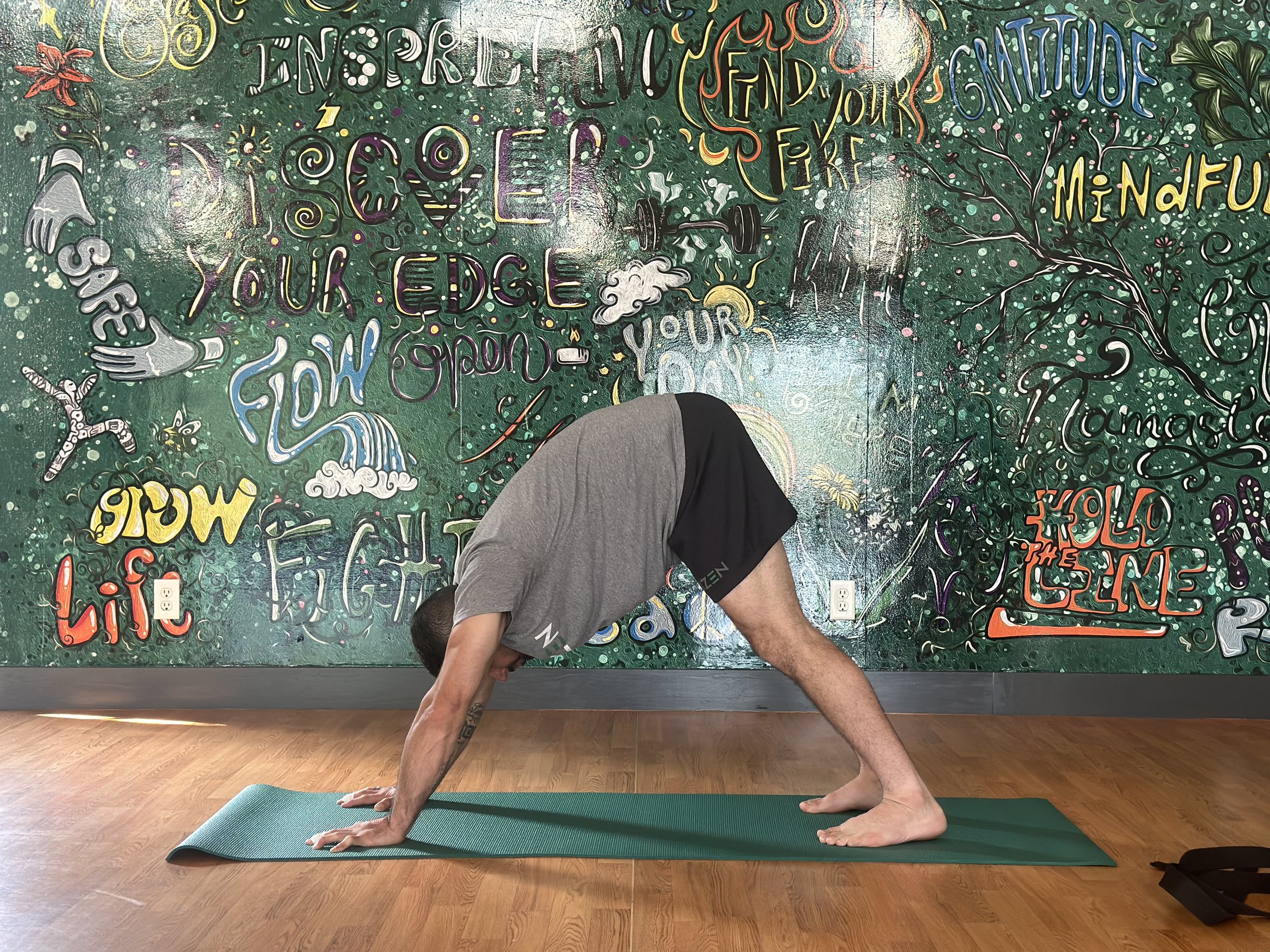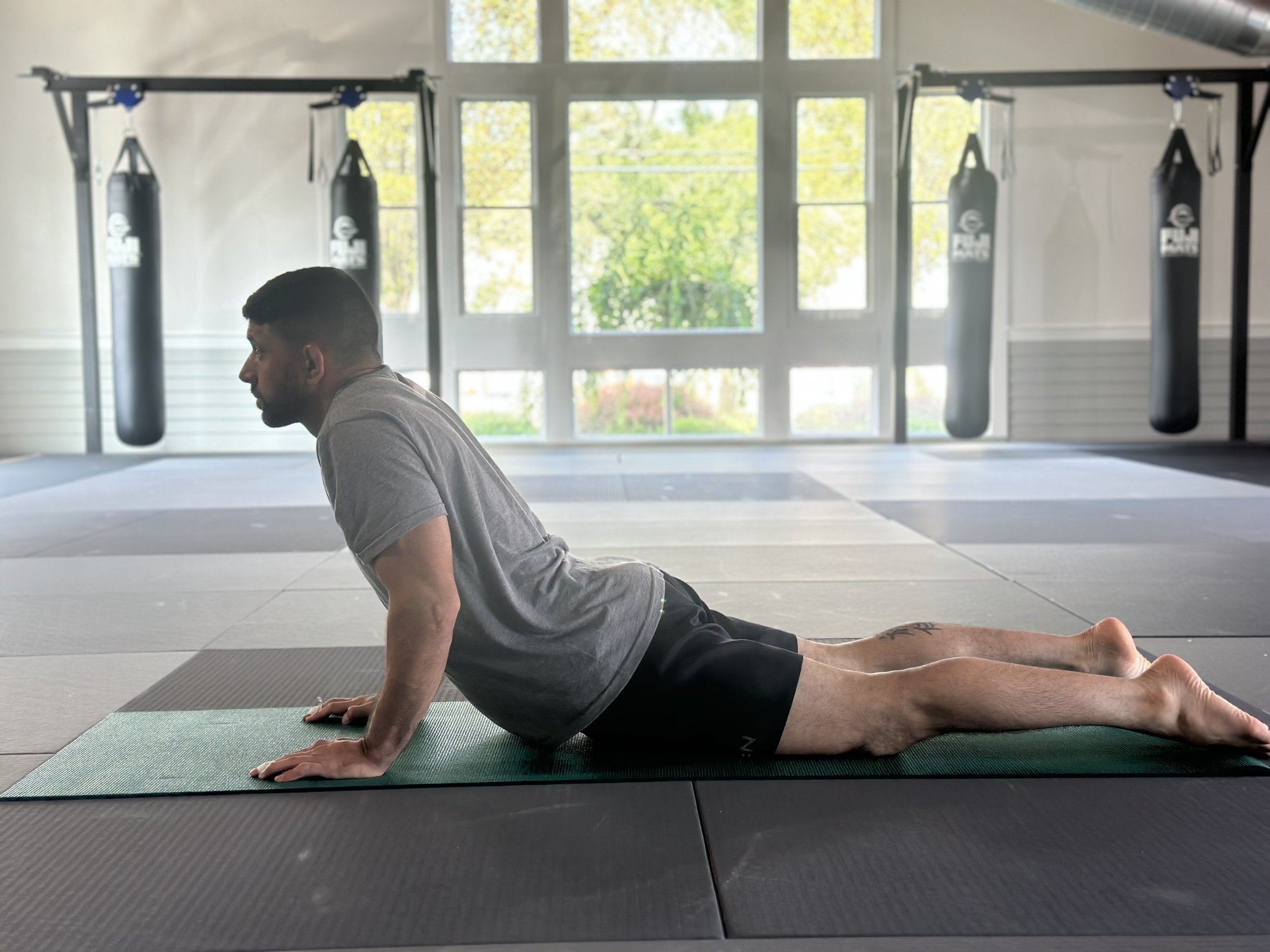The Importance of Stretching While Training
Picture this…you arrive at KAIZEN, ready to start your training session, but the instructor, and that little voice in your head, tells you to warm up and stretch before you begin. Ugh! You just want to get into your training, feel the endorphins releasing, and start your day right. But it’s just stretching…how important can it really be?!
Importance of Stretching & Warm Ups
Stretching is like the holy grail in physical exercise! It is the most important part of any physical activity. Stretching before, during, and after your training can decrease the risk of injury by improving your flexibility immensely. Improving flexibility for physical exercise has great benefits including improving performance, helping joints achieve their full range of motion, increasing muscle blood flow, and enabling muscles to work effectively.
It is important to note that stretching cold muscles, however, can be more harmful, so it is best to have a quick warm up before you begin stretching. David Nolan, a physical therapist at Massachusetts General Hospital told Harvard Health Publishing, “When everything is cold, the fibers aren’t prepared and may be damaged. If you exercise first, you’ll get blood flow to the area and that makes the tissue more pliable and amenable to change.” Start your stretching session with a five to 10 minute warm up of low-intensity activity, such as a quick walk, jog, or bike to get blood flow to those muscles before you stretch.
Stretching can also be beneficial during your training session, specifically during rest periods by stretching the same muscle you just worked for 30 seconds to increase muscle flexibility. Additionally, stretching after a training session can help with recovery by moving lactic acid out of your muscles, decreasing soreness, and returning blood flow to a regulated pace.
Stretching Essentials
Now that you have done your low intensity warm up, and are ready to begin stretching, here are some essential tips you will need to ensure you are getting a proper stretch in:
Stretching Shouldn’t Be Painful - When you are doing any stretch, you want to reach a point of mild tension, but never a point of pain. If a stretch is causing pain, stop the movement, reset your position safely, and try again. As you continue stretching in your fitness journey, your flexibility with each stretch will improve.
Seek Symmetry - Aim for equal flexibility on each side of your body, as this can help prevent injury if both sides are balanced. To identify this imbalance, observe your body after training, does one side often feel tighter than the other? Use this as an indicator to begin balancing flexibility on both sides.
Hold the Stretch & Breathe - It is important to hold each stretch for about 30 seconds. If you are struggling with flexibility or soreness in a certain area, you may want to hold the stretch for about 60 seconds. Remember! Breathe normally through all stretching movements, you can even incorporate yogic breathing techniques that you learn in classes at The Studio at KAIZEN.
Focus on Posture & Good Form - Maintaining posture and good form while stretching can translate to improved flexibility and helps decrease the risk of injury as you stretch those tighter, more sore muscles. Consider focusing on stretches specific to the activity you will be doing; how can you practice good form in those stretches?
Maintain Stretching Habits - While you may feel like stretching is time-consuming, or an unnecessary addition to your training routine, it is important to maintain stretching habits on a regular basis. Remember! It takes just five to 10 minutes before or after your training session to get a good stretch in. And just like fitness, stretching is a journey too. If you skip out on stretching regularly, you can begin to lose progress with your flexibility, just like you do when training.
Good Stretches for BJJ
Just like other forms of physical exercise, BJJ seeks a heightened need for the body’s full range of motion. Stretching and improving flexibility is a fantastic way to obtain this full range of motion, here are a few good stretches for BJJ:
The Butterfly Stretch - To complete the butterfly stretch, sit on the ground with your legs straightened in front of you. Focus on the posture of your spine by sitting straight up. Next, grab your ankles and bend your legs as you pull your ankles toward your pelvis. As your legs bend to the sides, let the bottoms of your feet touch together. Once you have pulled your ankles to a point of tension, grab your ankles, and rest your elbows on their respective knees. Slowly, press your knees down with pressure from your elbows. Hold for 30 seconds.
The Spinal Twist Stretch - To complete the spinal twist stretch, lay on your back with your legs together and your arms stretched out to the sides. Next, lift your left leg up in the air and fold it over the right side of your body. Keep your shoulders on the ground and turn your head to the left and hold for 30 seconds. Repeat this for the right leg.
Yes’s and No’s Stretch - To complete the Yes’s stretch, lay on your back with your legs together and your arms by your side or gently rest your stomach. Lift your head about one inch off the ground. Touch your chin to your chest, then return your head to its starting potion. Repeat this about 20 times. To complete the No’s stretch, in the same lying down position, lift your head about one inch off the ground. Turn your head to the left, and then to the right before returning your head to its starting position. Repeat this about 20 times.
Next time you take a Brazilian Jiu Jitsu Class or fitness class at KAIZEN, be sure to ask Professor Bruno or one of our fitness instructors about their favorite stretches that keep them healthy, flexible, and ready for their next training session.



